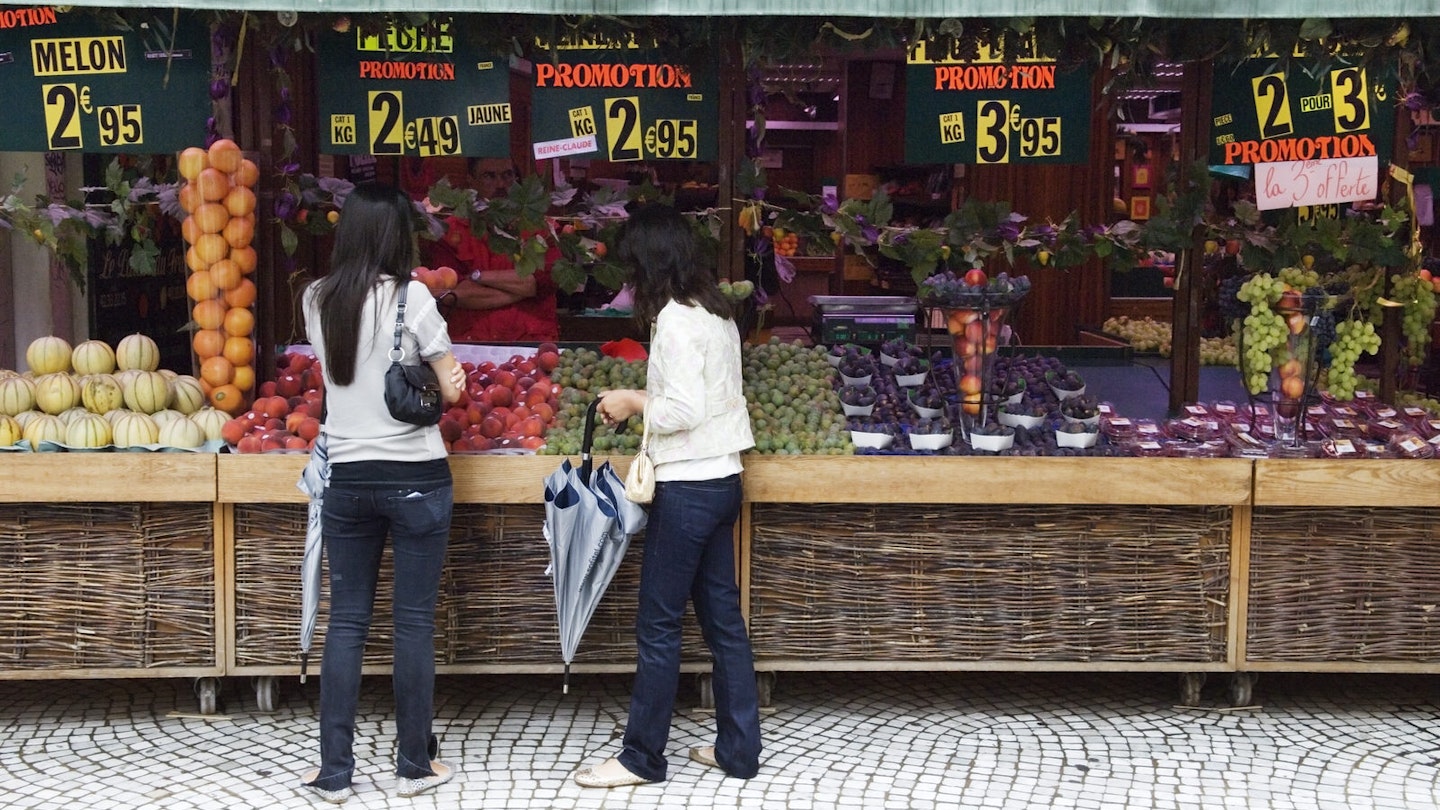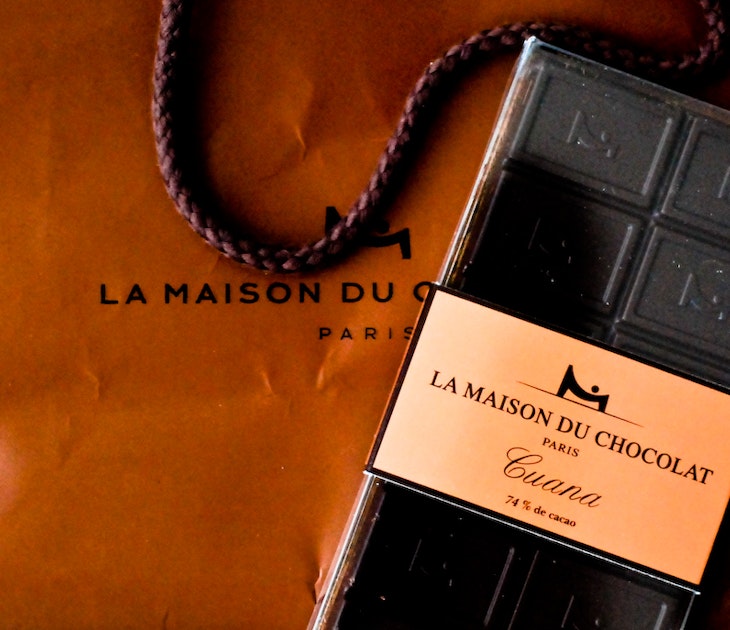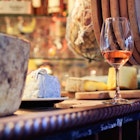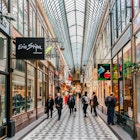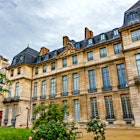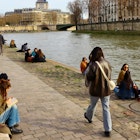Paris' multitude of markets plunge visitors into the heart of shopping in the French capital. Bustling street markets and rues commerçantes are piled high with aromatic seasonal produce, historic covered markets shelter specialist food stalls, colourful flower markets burst with perfumed blooms and flea markets are filled with vintage treasures. We're here to guide your browsing at these lovely markets to experience local Parisian life in full swing.
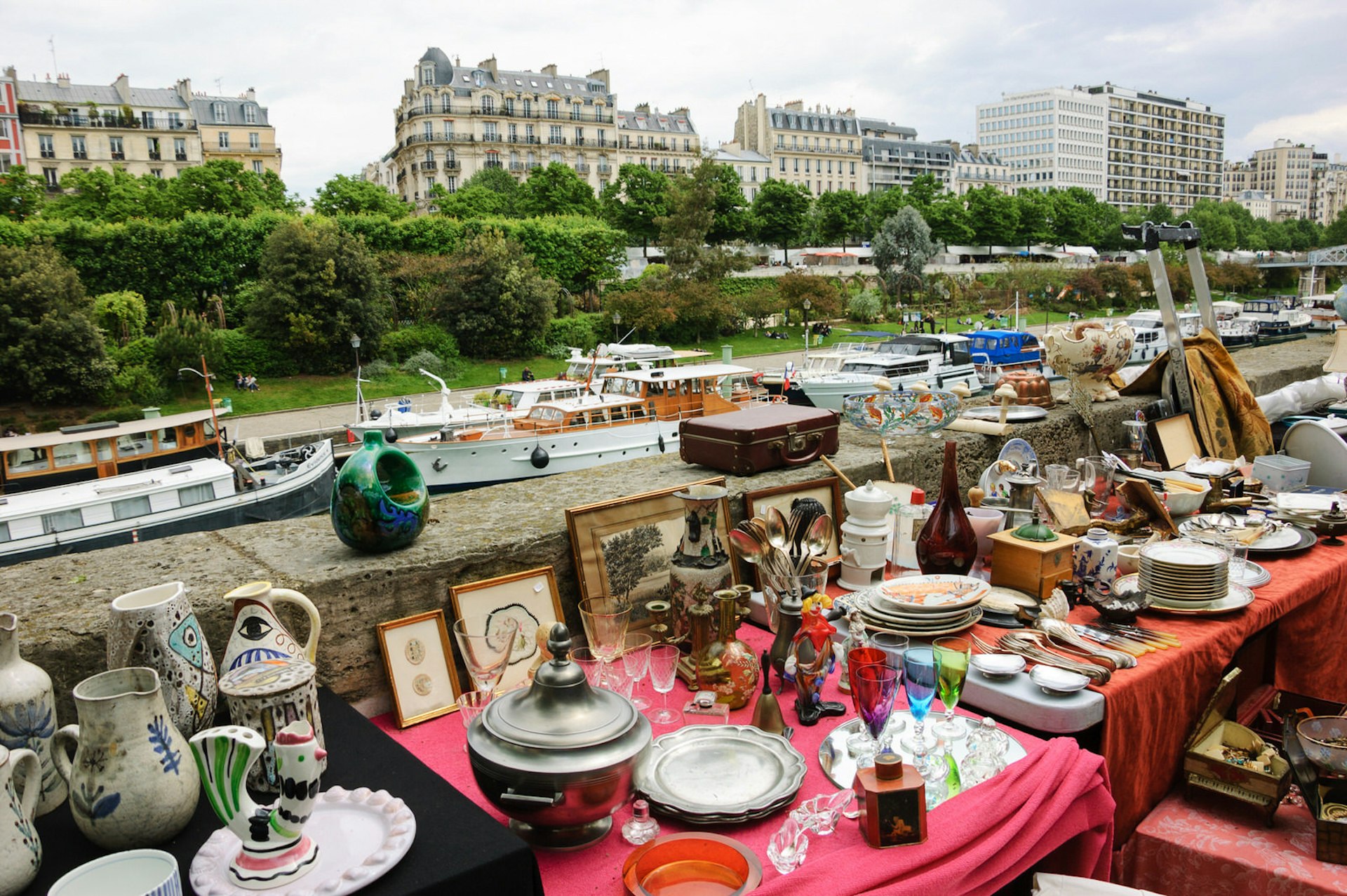
Shop at street markets
Across Paris' patchwork of village-like quartiers (neighbourhoods), street markets set up at least once a week (though never on Mondays), where animated traders tout their wares, offer tastings and engage in passionate discussions with shoppers, united by a shared love of food.
During summer, trestle tables overflow with sun-ripened fruits like cherries, blackberries, raspberries, peaches and plums, vegetables such as green beans, and bulbs of garlic. Autumn brings forest-picked mushrooms, pumpkins and freshly harvested nuts. In the chilly winter months, when the tarpaulin-covered stalls are strung with bright lights, look out for pungent truffles, shucked oysters, prickly sea urchins and citrus fruits such as tangerines. Spring sees a bounty of asparagus, artichokes, cucumbers and radishes.
Year-round, you'll also find a head-spinning array of cheeses, breads, fresh and cured meats such as sausages, poultry – including spit-roasted chickens, fresh fish laid out on beds of crushed ice, olive oils, spices, preserves, pâtés, pastries, sweets and sizzling ready-to-eat dishes like crêpes. While food is the main focus of the city's street markets, many also have stalls stocking kitchen gadgets, cheap clothing, jewellery, leather handbags and baskets.
The City of Paris' official website lists the opening hours of all the marchés alimentaires (food markets) by arrondissement (city district), and also plots them on a handy map.
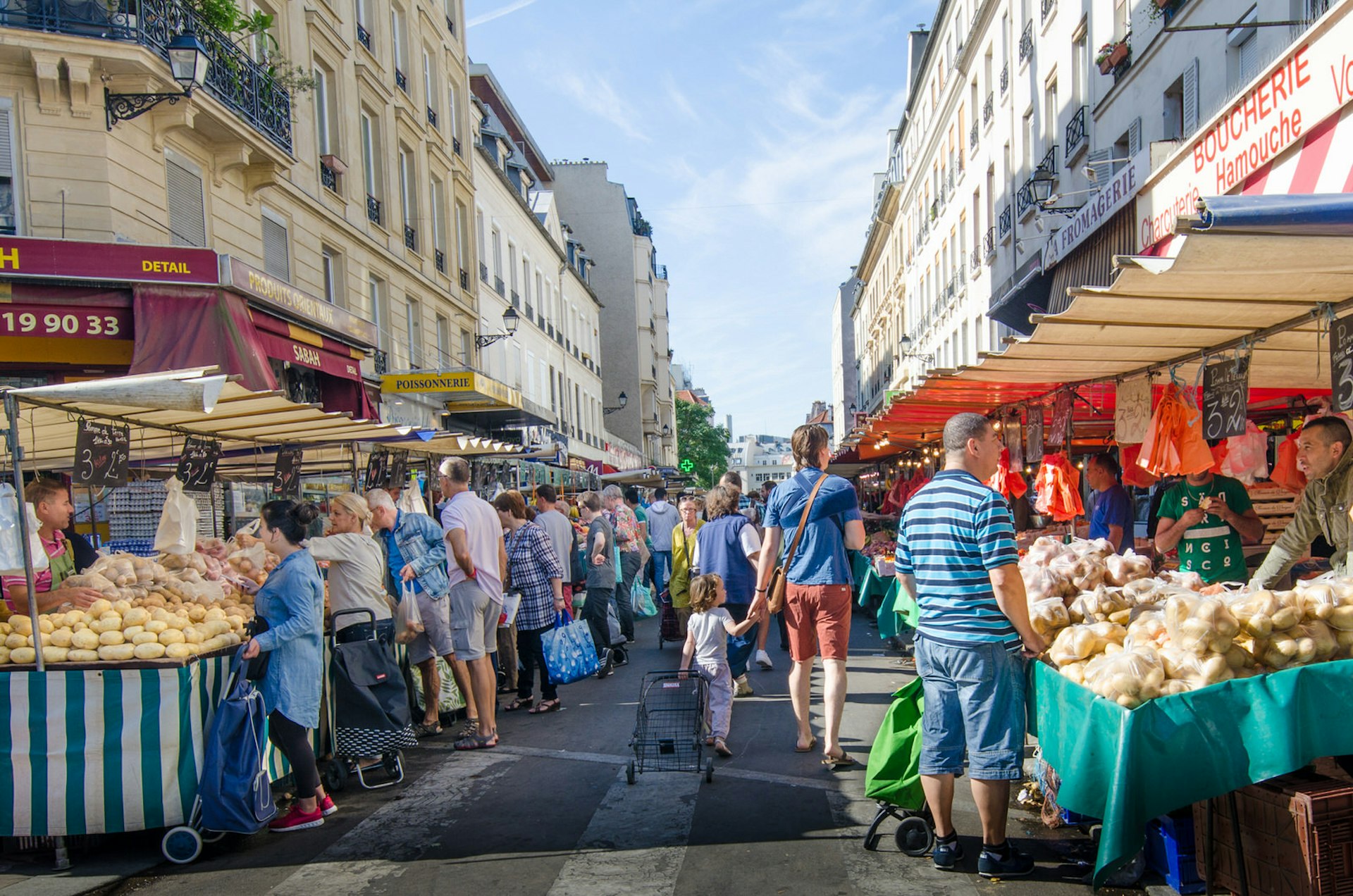
One of the biggest and best street markets, the bi-weekly Marché Bastille brims with over 150 stalls. Nearby, chefs' favourite Marché d’Aligre is, unusually for Paris, a fixture six days a week. Weekends are especially busy, so arrive early.
Other favourites on the Seine's Right Bank are the Marché Daumesnil (Tuesday and Friday; bd de Reuilly), off the beaten track in the 12e, with stalls stretching over 1.3km; Marché Président Wilson in the ritzy 16e, selling premium produce like heirloom vegetables; Marché de Belleville, in the artsy, multi-ethnic Belleville neighbourhood; and Marché Barbès (Wednesday and Saturday; bd de la Chapelle) in the 18e's vibrant 'Little Africa' neighbourhood, where you'll find cassava, okra, yams and spices such as mnavu (African nightshade), amaranth seeds, baobab pods, powdered mbongo (alligator pepper) and kola nuts.
On the Left Bank, top picks include Marché Monge, set around a pretty fountain, and Marché Maubert, both located in the Latin Quarter; and Marché Raspail, ideal for picking up picnic fare to take to the beautiful chestnut-shaded park Jardin du Luxembourg.
Explore organic markets
On Sundays, Marché Raspail transforms into a marché bio selling all-organic (biologique) fruit and vegetables. Other organic markets include the 17e's Marché Biologique des Batignolles, and the 14e's Marché Biologique Brancusi (place Constantin Brancusi), which both take place on Saturdays. There’s also the twice-weekly Marché Biologique Place du Père Chaillet (Wednesday and Saturday; place du Père Chaillet, 11e).
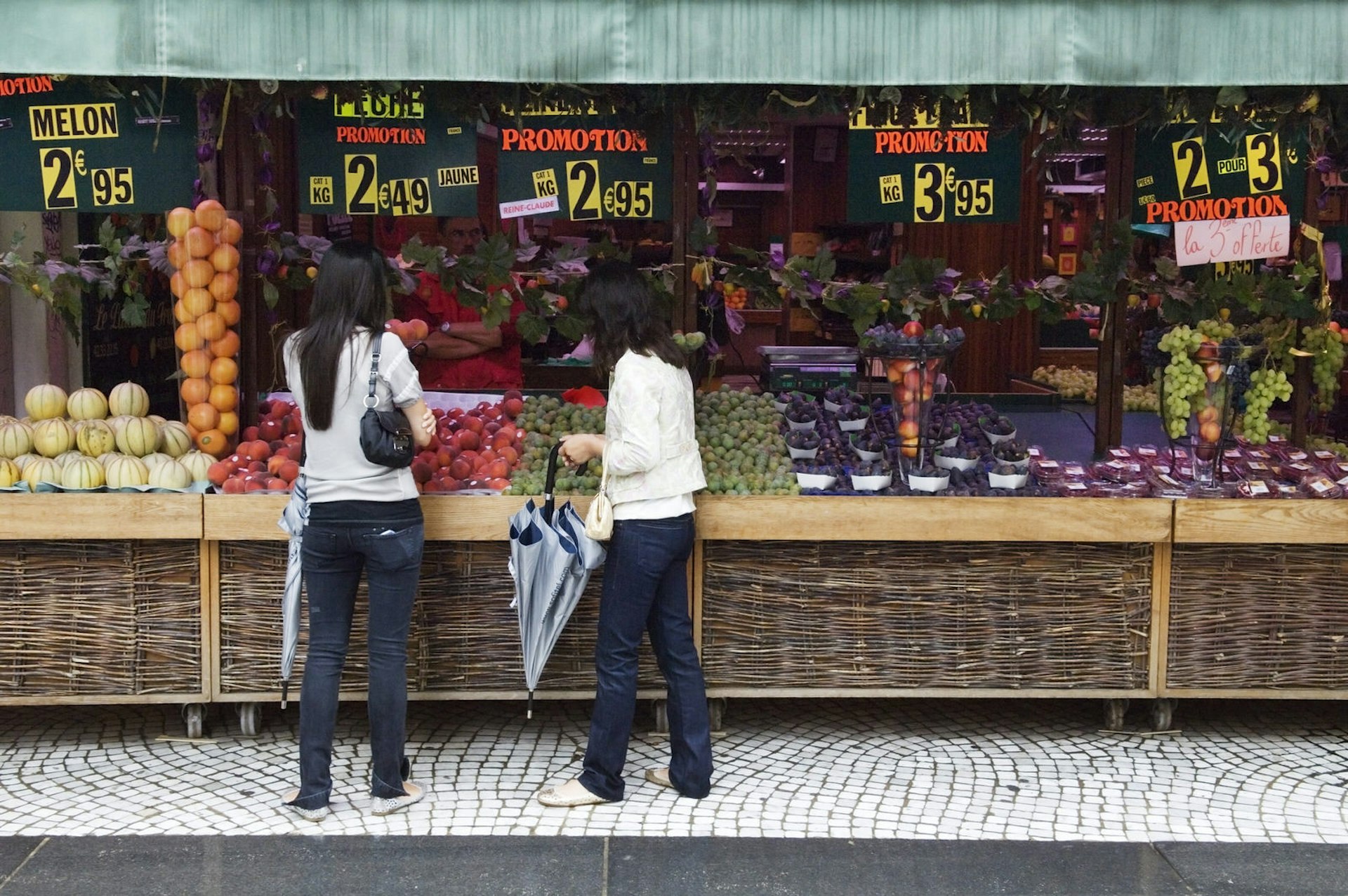
Stroll the rues commerçantes (shopping streets)
Pavement stalls selling food set up along many of Paris' neighbourhood rues commerçantes (shopping streets). These vibrant streets are lined with boulangeries (bakeries), pâtisseries (pastry shops), fromageries (cheese shops), cavistes (wine shops), épiceries fines (specialist grocers) and other food and drink boutiques.
Atmospheric rues commerçantes include rue Montorgueil, which crosses from the 1er to 2e arrondissements. It's the one-time oyster market of the erstwhile wholesale markets Les Halles. (These days, Paris' sprawling wholesale markets, the Marché International de Rungis, are outside central Paris in Rungis and can be visited by eye-opening early morning guided tours that include bus transport and breakfast.)
Other Right Bank rues commerçantes include rue des Martyrs, which climbs from the 9e uphill to Montmartre in the 18e (super-specialised shops include Mesdemoiselles Madeleines, selling only shell-shaped madeleine cakes); and under-the-radar rue Poncelet, just north of the Arc de Triomphe in the 17e (don't miss a visit to Fromagerie Alléosse, with its own cheese-ripening cellars).
Among the best Left Bank rues commerçantes are the Left Bank's rue Mouffetard, in the Latin Quarter; rue Cler, close to the Eiffel Tower in the 7e; and rue Daguerre, around the corner from Les Catacombes in the 14e.
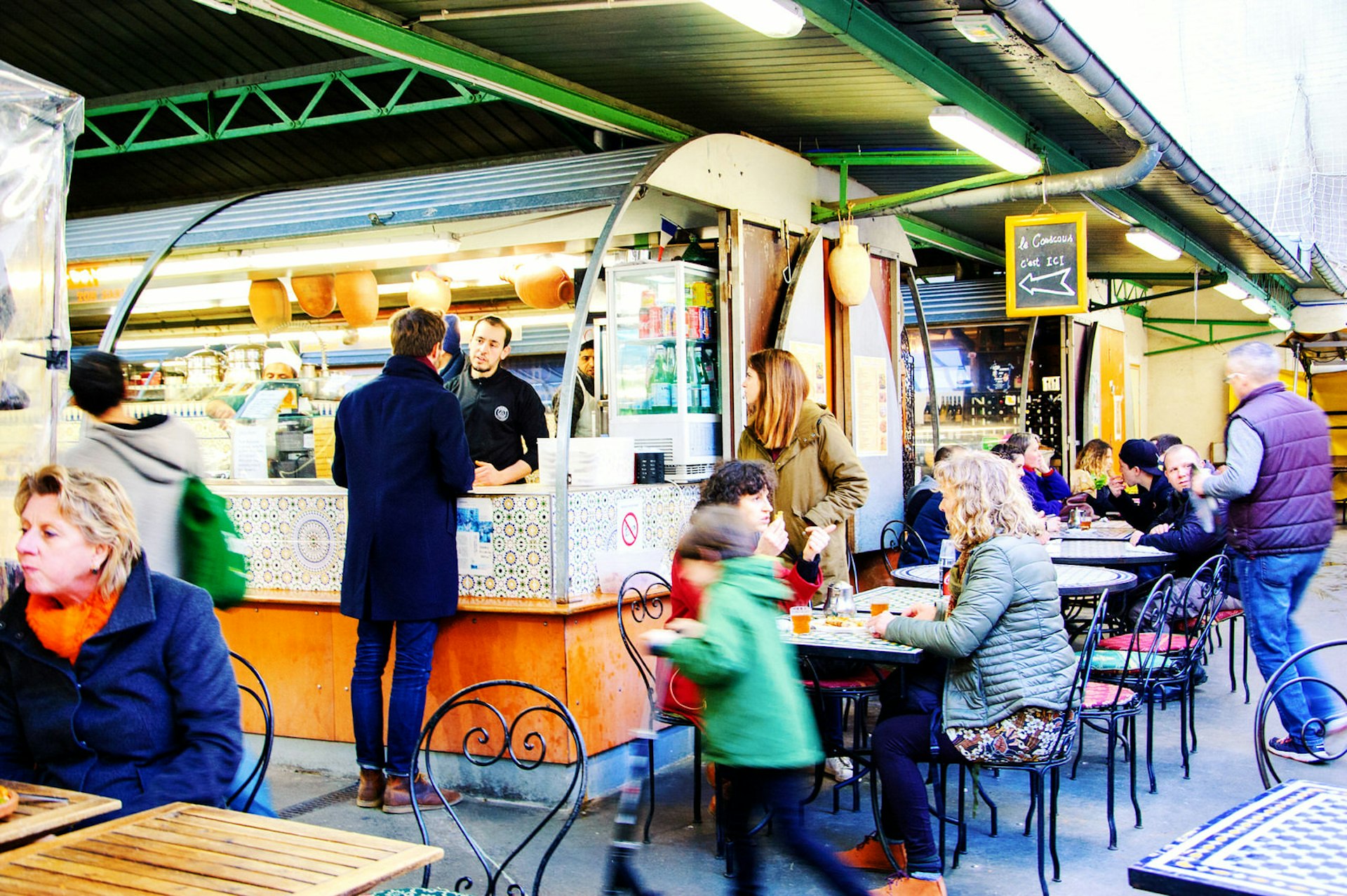
Take shelter in the covered markets
The city's covered markets are treasure chests of gourmet goods in any weather.
Adjacent to the Marché d’Aligre street market is the covered Marché Beauvau, where stalls sell everything from cheeses to French craft beers, plus premade dishes like gratin dauphinois (creamy potato bake).
Also on the Right Bank in Le Marais, hidden behind a metal gate, is the city's oldest covered market, Marché des Enfants Rouges, dating from 1615: along with a clutch of produce stalls, its on-site dining options include Les Enfants du Marché with counter seating, natural wines and creative French cooking like wild abalone bouillabaisse.
In the 10e, Marché St-Martin dates from 1859, while the glass-and-iron Marché St-Quentin opened in 1866. The Left Bank's Marché Saint-Germain, in a late 20th-century building, combines produce purveyors and upmarket food stands.

Browse the beautiful flower markets
Street markets and covered markets often have florist stalls but Paris also has dedicated flower markets. On the Île de la Cité, the larger of Paris' two inner-city islands, the city's oldest market of any genre, the 1808-established Marché aux Fleurs Reine Elizabeth II, is a fragrant oasis of colour and greenery. Garlanded by gourmet shops, place de la Madeleine is also home to the early 19th-century Marché aux Fleurs Madeleine.
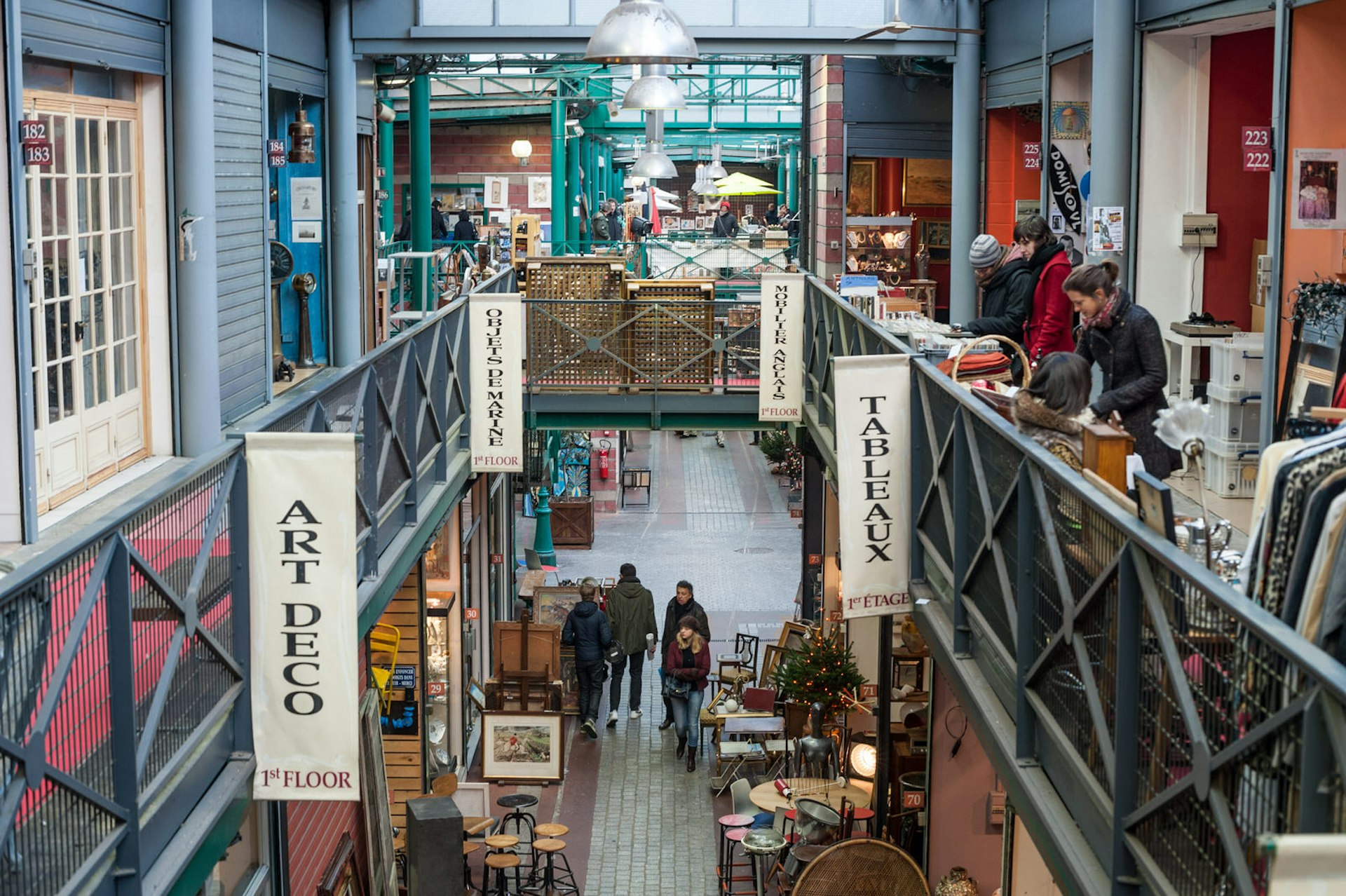
Find secondhand treasures at the flea markets
Antique furniture, clocks, framed paintings and fine jewellery through to retro furnishings, vinyl records and cheap fashion items are just some of the wares at the vast Marché aux Puces de St-Ouen, just north of the bd Périphérique ring road, whose 15 separate marchés (markets) contain over 2000 stalls.
Substantially smaller but more central, the Marché aux Puces d’Aligre sets up next to the Marché d’Aligre street market in the 12e; it's especially good for glassware, silverware and ceramics.
In the city's south, the Marché aux Puces de la Porte de Vanves has 380-plus stalls selling vintage clothing, furniture and much more. Close by, over 60 booksellers sell secondhand titles at the Marché Georges Brassens, in former abattoir pavilions next to leafy Parc Georges Brassens. Booklovers also won't want to miss the bouquiniste stalls lining both banks of the Seine, with rare books, old maps and advertising posters.
Check Sortiraparis.com for updated schedules of ephemeral markets including brocantes (secondhand markets) and vide-greniers ('empty the attic' sales) that frequently take place in Parisian streets.
